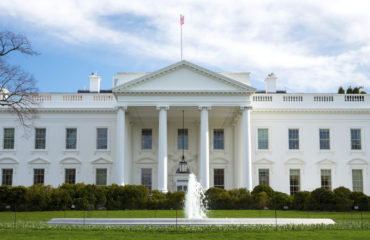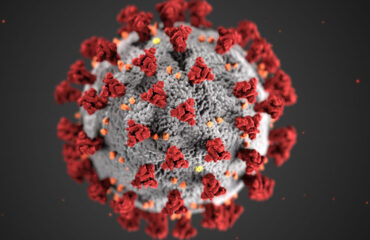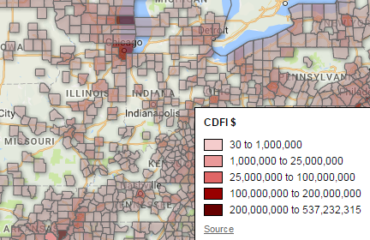The drumbeat for a dramatic re-ordering of federal rural development policy came with the release of the Trump Administration’s so-called “Skinny Budget” for Fiscal Year (FY) 2018 in March. “Skinny” because it was short on details, the first budget of the Trump era proposed a $54 billion reduction in domestic discretionary spending with an increase of the same amount for the Pentagon. It also proposed a $30 billion increase in defense for the current fiscal year (2017), financed in part by unspecified reductions totaling $18 billion from domestic programs.
For the U.S. Department of Agriculture (USDA), a 21 percent, or $5 billion reduction was offered that included elimination of rural water/wastewater loans and grants (so much for infrastructure financing), elimination of the Rural Business-Cooperative Service and its programs, and a big reduction ( 50 percent) in Rural Development staffing.
In early May, Congress ignored most of the Trump budget request and approved the Fiscal Year 2017 appropriations bill, which included increases in direct homeownership loans, Mutual Self-Help Housing grants, and rental housing programs. Congress provided the White House some of the defense money, but nowhere near the budget request and did not cut domestic programs.
On May 23, the White House rolled out its full blown FY 2018 budget. The budget proposed a 37 percent reduction in community development programs at Department of Housing and Urban Development (HUD), Commerce, and USDA.
The budget included elimination of 24 different rural development programs. Overall in terms of Budget Authority (BA) rural development was cut by $867 million or 31 percent. Rural Business programs and the Rural Business and Cooperative Service were eliminated. Rural Utility programs fell from $8 billion to $6.2 billion, principally due to the elimination of about in rural water-sewer loans ($1 billion) and grants ($480 million). BA for housing programs dropped from $1.6 billion to $1.36 billion.
Virtually every direct rural housing loan and grant program, including Section 502 Direct, Section 504 loan and grants, Section 523 Mutual Self-Help Grants, Section 515, and Section 514/516 Farmworker Housing Loans and Grants, were zeroed out in the budget. Section 521 Rental Assistance, while not eliminated, was funded at $1.345 billion – a $60 million dollar decrease from the FY 2017 rate. Left in the wake of these proposals was a few million more here or there for loan guarantees for multifamily housing and a small increase in community facility lending.
While all this was going on, on May 11 USDA announced plans for a proposed reorganization that established an Under Secretary for Trade and Foreign Agriculture Affairs and eliminated the Under Secretary for Rural Development. The proposal stated that by eliminating the Undersecretary for Rural Development position, it would “elevate” Rural Development, claiming that the Secretary will take a direct hand in Rural Development. This implausible claim came against the backdrop of the drastic funding cuts included in the Budget request.
In response, on June 11 the National Rural Housing Coalition (NRHC) released a letter to Congress signed by nearly 600 organizations opposing the Administration’s proposal to eliminate the Under Secretary for Rural Development at USDA. The letter protested the draconian cuts to rural development programs in the FY 2018 Budget request that would severely impact people from economically distressed rural communities. Signatures came from organizations located all around the country, and included community development organizations; nonprofit housing developers; state and national trade associations; farmer and agriculture cooperatives; affordable housing organizations; city governments; universities; and tribal governments.
With the stage set and NRHC at the forefront, the House and Senate Appropriations Committees began consideration of their FY 2018 Agriculture bills. Even without serious consideration of the Trump budget, FY 2018 money is tight. The caps on spending mandated by the Budget Control Act forced domestic discretionary down by about $3 billion and for good measure the House Budget Committee set the total available at $4 billion below that.
The House Appropriations Committee acted first, reporting out a bill almost $900 below the FY 2017 level, including a $350 million cut to rural development. That said, the House Agriculture Appropriations bill (H.R. 3268) did not approve any of the eliminations proposed by the Trump Administration. Some rural development programs were trimmed, but the programs and the authorities that have served rural America for some 50 years remain in place in the House Bill.
The House did follow the budget on two points. First it did not fund the Office of the Undersecretary for Rural Development. Instead the bill included about the same amount of money provided in FY 2017 for the Office of the Undersecretary for Rural Development for the Assistant to the Secretary for Rural Development. This led some to wonder: Is this reorganization proposal is a distinction without a difference?
The House bill also recommended a new grant program: the Rural Economic Infrastructure Account (REIG), which was also included in the Budget request. The REIG account pools together several existing USDA rural development grant programs into one grant program. The pooled grant programs are grants for low-income housing repair and rural housing preservation (Section 504 grants and Section 533 Housing Preservation Grant (HPG)), rural community facilities grants (including RCDI), grants for telemedicine distance learning, and grants for broadband. Any funds appropriated to those accounts would be transferred to the REIG Account, if enacted, and none of these programs received funding outside of the REIG program in the House bill.
The House bill funded this account at $122 million, with $60 million set aside for Appalachian communities. Each eligible activity under the account must receive at least 15 percent of the total provided under the Account, which, if funded at the requested level equals around $18.403 million, meaning all of the programs within the Account could face a significant decrease. For example, in FY 2017 Section 504 grants and HPG were funded together as “Rural Housing Assistance Grants” at $33.701 million.
This consolidation hits very-low income people very hard. USDA’s Section 504 Loan and Grant program and the HPG program are vital to many rural residents, particularly the elderly, who lack alternative financial resources to make basis repairs the preserve their homes. A disproportionate amount of the nation’s occupied substandard housing is located in rural areas. Most of the people affected are the poorest of the poor or the elderly, and they usually live in rural areas with incomes below the federal poverty level. Non-metro tracts are more than two times as likely to lack or have incomplete plumbing compared to metro tracts. This issue is particularly prevalent in counties that contain American Indian Reservations, and Tribal census tracts are five times more likely to lack or have incomplete plumbing when compared to metro tracts.
The Senate Appropriations Committee took a better approach to domestic discretionary spending and rural development appropriations. The Committee did not cut into domestic discretionary totals, leaving the amount available at the same level as FY 2017. As a result, the amount available to the Agriculture Bill (S. 1603) was the only about $350 million below a freeze.
This gave the Committee the fiscal space to put together a bill that set most rural development programs at the FY 2017 rate. The Senate bill is $4.2 billion above the budget request for rural development programs. This includes $1 billion above the budget request for Section 502 direct loans; $57.5 million in BA and grants for Mutual Self-Help Housing (+$30 million); additional funding for Multifamily Revitalization and $550 million for water-sewer. The Committee bill does not include the Rural Economic Infrastructure proposal – thereby freeing up funding for Section 504 grants, HPG and RCDI. The Rural Business Service and its programs are continued at the FY 2017 rate.
On the matter of the USDA Rural Development Reorganization, the Senate bill provides funding for the Assistant to the Secretary for Rural Development. However, the Committee also approved an amendment sponsored by Sen. Jon Tester (D-MT) that restored funding for the Office of Undersecretary and amended the Agriculture Department Reorganization Act to require the Secretary to nominate an Under Secretary for Rural Development who would be confirmed by Congress. The FY 2018 Agriculture Bill was reported to the Senate floor with a unanimous vote.
As we prepare this report, the House of Representatives is poised to leave Washington on Friday, July 28 for the August recess. The Senate will continue to be in session for a week or two more. Nowhere on any schedule is floor consideration of the FY 2018 Agriculture Bill.
When Members of Congress return in September, they will immediately face decisions on the debt limit, FY 2018 spending, budget reconciliation, tax reform and, possibly heath care. Congress may not take up final decisions on FY2018 bills until the late fall.
Washington has never been more uncertain but it appears that when Congressional conference committees meet to resolve differences, the choices between the House and Senate Ag bills will be relatively narrow and nothing remotely resembling the Trump Budget.



